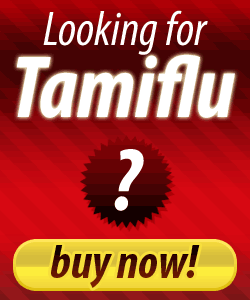
Vancouver Island’s second wave of H1N1 swine flu may have peaked this week, a health authority report indicates.
The Vancouver Island Health Authority reported numbers of visits to Island doctors for flu-symptoms remain above historical levels. But the rate of increase appears to be slowing. “Based on a 12-week wave, we estimate that we are now at the pandemic peak and some acute-care data suggests that we may be entering the post-peak phase,” says the report, dated Nov. 10.
The second pandemic wave is believed to have hit Vancouver Island in mid-September, ahead of the rest of B.C. and Canada.
Since April, when the first wave arose, 55 H1N1 cases have required hospitalization on the Island. Of those, 10 patients in the south Island and five in the central Island have needed intensive care.
B.C. chief medical officer Dr. Perry Kendall said he is cautiously optimistic about indicators showing the pandemic is levelling off. Those indicators include the percentage of doctors’ visits by patients reporting flu-like symptoms, the number of tests performed for H1N1, the amount of anti-viral Tamiflu prescribed and the number of hospitalizations over the last two weeks.
“It doesn’t mean to say that [the indicator signs] might not take off again. But we are hopeful that they won’t,” said Kendall, who has advised people to continue to be vaccinated to prevent a third wave this spring.
Meanwhile, based on clinical studies in Europe and accepted by federal officials, B.C. will limit healthy children aged three to under 10 to a single, half dose of H1N1 vaccine.
Previously, children between six months and 10 years were said to need two half doses, spaced at least 21 days apart.
“That’s good news. It means we have a little more to spread around,” said Kendall.
Two half doses will still be required for children aged six months to under three, and those 10 and under with chronic health conditions.
B.C. was expecting delivery yesterday of about 135,000 doses of adjuvanted vaccine, along with about 118,000 doses of the unadjuvanted variety.
The adjuvant is a compound of water, fish oil and vitamin E that boosts a body’s immune response. The unadjuvanted vaccine was originally reserved for women in the early stages of pregnancy, but will now likely be pooled with the rest of the supply.
Vaccination clinics at Hillside Centre and Esquimalt High School reported few people coming yesterday, indicating Vancouver Island may be close to vaccinating most of its initial target groups. They include people under 65 with chronic health conditions, pregnant women, people living in remote communities, some front-line health-care workers and young children.
No announcement has been made yet about expanding vaccinations to the general population.
Clinics continue today, with some offering the unadjuvanted vaccine for pregnant women. Obstetricians and midwives are also being supplied with the unadjuvanted vaccine.
The Vancouver Island Health Authority reported numbers of visits to Island doctors for flu-symptoms remain above historical levels. But the rate of increase appears to be slowing. “Based on a 12-week wave, we estimate that we are now at the pandemic peak and some acute-care data suggests that we may be entering the post-peak phase,” says the report, dated Nov. 10.
The second pandemic wave is believed to have hit Vancouver Island in mid-September, ahead of the rest of B.C. and Canada.
Since April, when the first wave arose, 55 H1N1 cases have required hospitalization on the Island. Of those, 10 patients in the south Island and five in the central Island have needed intensive care.
B.C. chief medical officer Dr. Perry Kendall said he is cautiously optimistic about indicators showing the pandemic is levelling off. Those indicators include the percentage of doctors’ visits by patients reporting flu-like symptoms, the number of tests performed for H1N1, the amount of anti-viral Tamiflu prescribed and the number of hospitalizations over the last two weeks.
“It doesn’t mean to say that [the indicator signs] might not take off again. But we are hopeful that they won’t,” said Kendall, who has advised people to continue to be vaccinated to prevent a third wave this spring.
Meanwhile, based on clinical studies in Europe and accepted by federal officials, B.C. will limit healthy children aged three to under 10 to a single, half dose of H1N1 vaccine.
Previously, children between six months and 10 years were said to need two half doses, spaced at least 21 days apart.
“That’s good news. It means we have a little more to spread around,” said Kendall.
Two half doses will still be required for children aged six months to under three, and those 10 and under with chronic health conditions.
B.C. was expecting delivery yesterday of about 135,000 doses of adjuvanted vaccine, along with about 118,000 doses of the unadjuvanted variety.
The adjuvant is a compound of water, fish oil and vitamin E that boosts a body’s immune response. The unadjuvanted vaccine was originally reserved for women in the early stages of pregnancy, but will now likely be pooled with the rest of the supply.
Vaccination clinics at Hillside Centre and Esquimalt High School reported few people coming yesterday, indicating Vancouver Island may be close to vaccinating most of its initial target groups. They include people under 65 with chronic health conditions, pregnant women, people living in remote communities, some front-line health-care workers and young children.
No announcement has been made yet about expanding vaccinations to the general population.
Clinics continue today, with some offering the unadjuvanted vaccine for pregnant women. Obstetricians and midwives are also being supplied with the unadjuvanted vaccine.




No comments:
Post a Comment
Note: Only a member of this blog may post a comment.